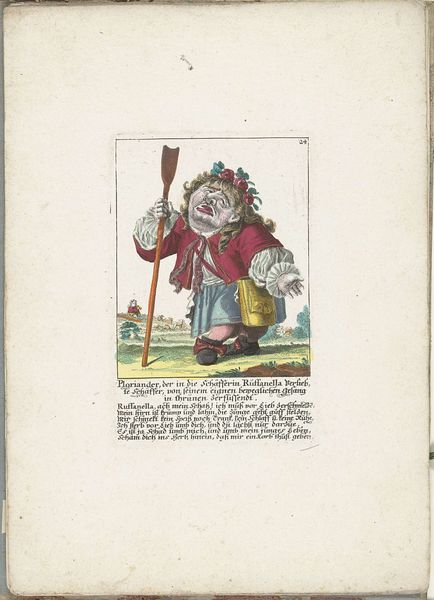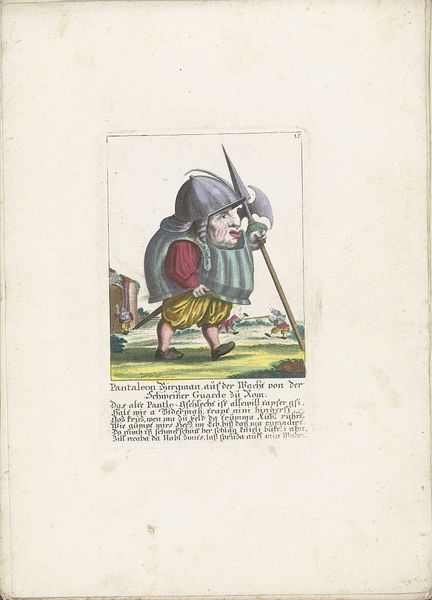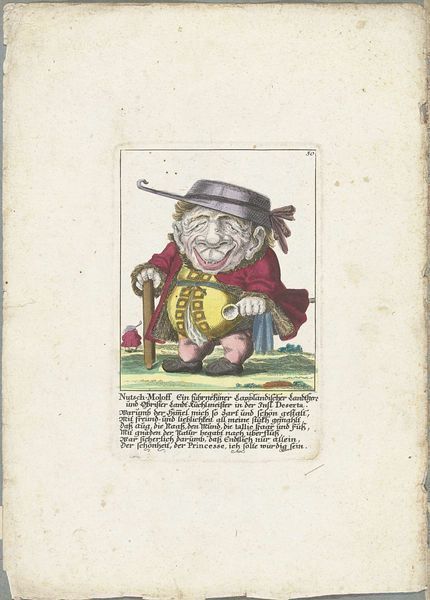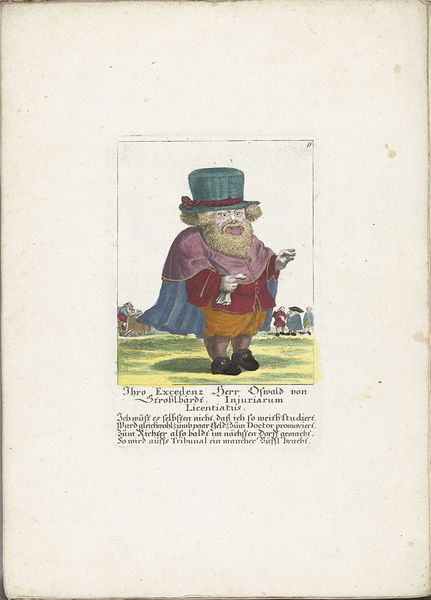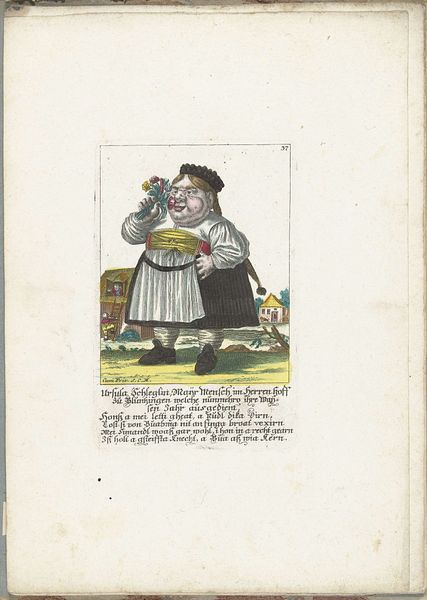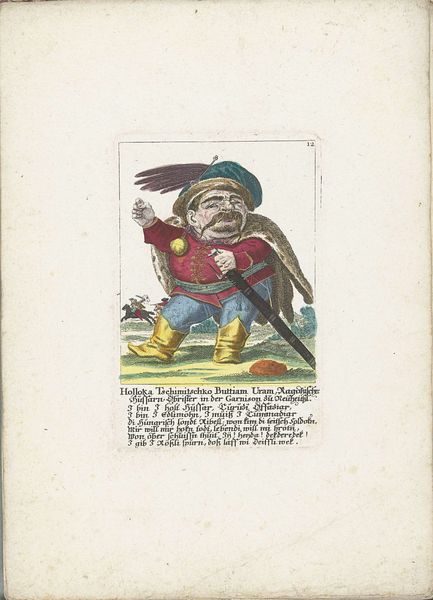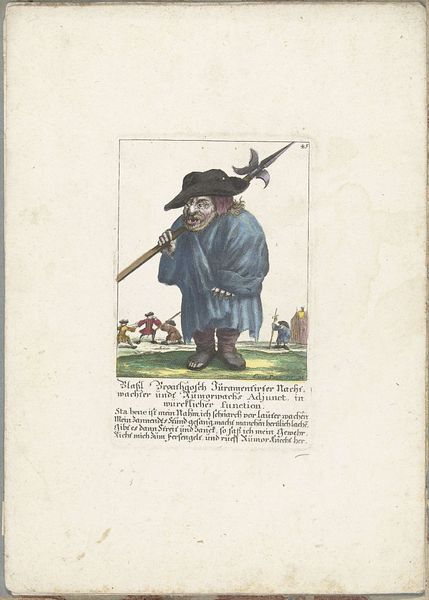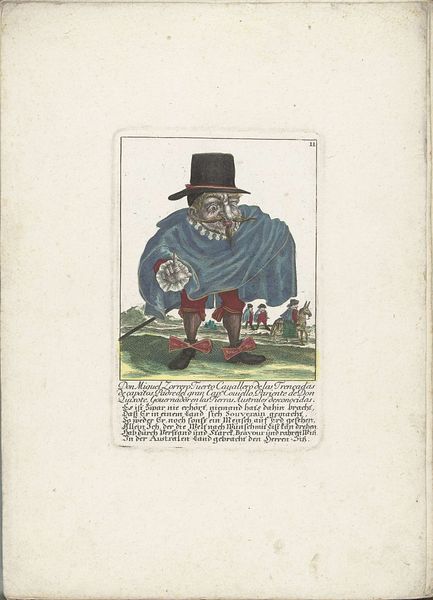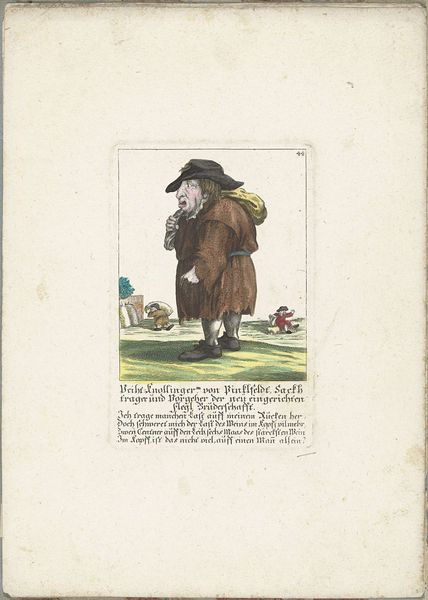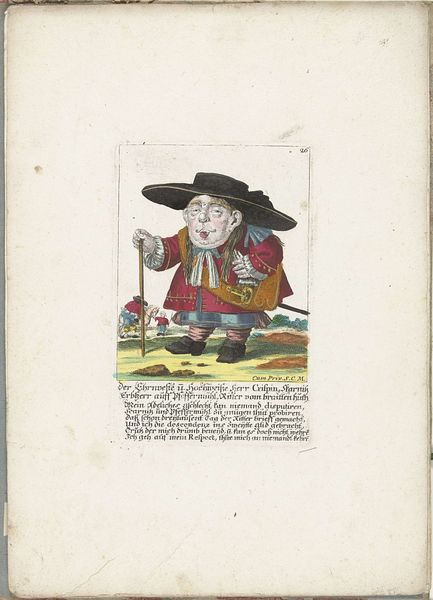
Dimensions: height 170 mm, width 110 mm, height 320 mm, width 225 mm
Copyright: Rijks Museum: Open Domain
Martin Engelbrecht’s “De dwerg Christl Vestnbalkh” was printed around 1710, using engraving and etching. The linear quality of the printmaking process is evident throughout the image. The work's graphic nature depends on the qualities of line, both for its descriptive and expressive capacity. The artist uses these graphic techniques to create a caricature that speaks volumes about social hierarchy in the early 18th century. The print medium itself is significant. As a mode of production, printmaking allowed for the widespread distribution of images. It democratized access to art but also contributed to the rise of caricature as a means of social commentary, and the reinforcement of existing prejudice. This form of art could both reflect and shape public perception. Ultimately, understanding the materials and methods employed by Engelbrecht allows us to fully appreciate its cultural significance. It's a reminder that art is not just about the image, but also about the means of its production and consumption, and the social dynamics it reflects and perpetuates.
Comments
No comments
Be the first to comment and join the conversation on the ultimate creative platform.


